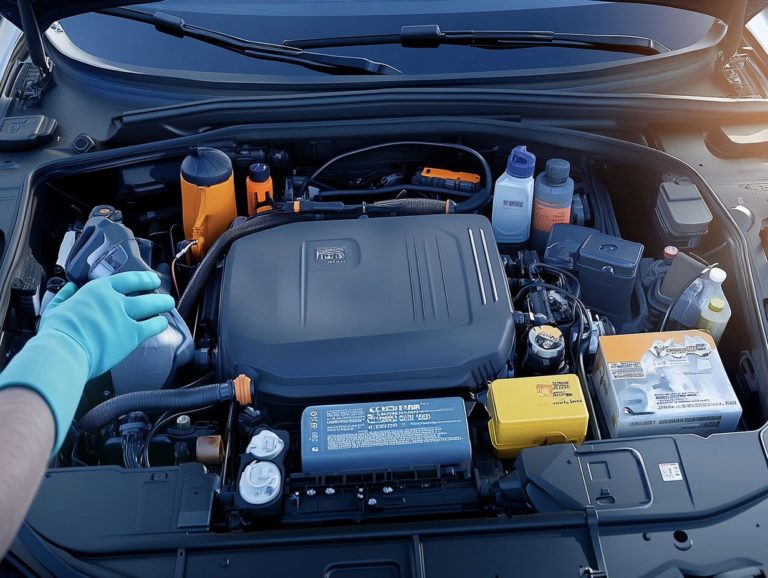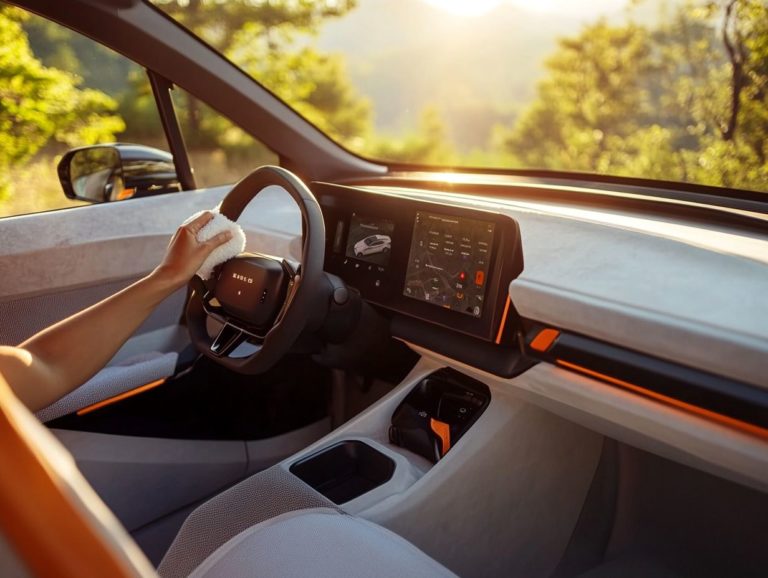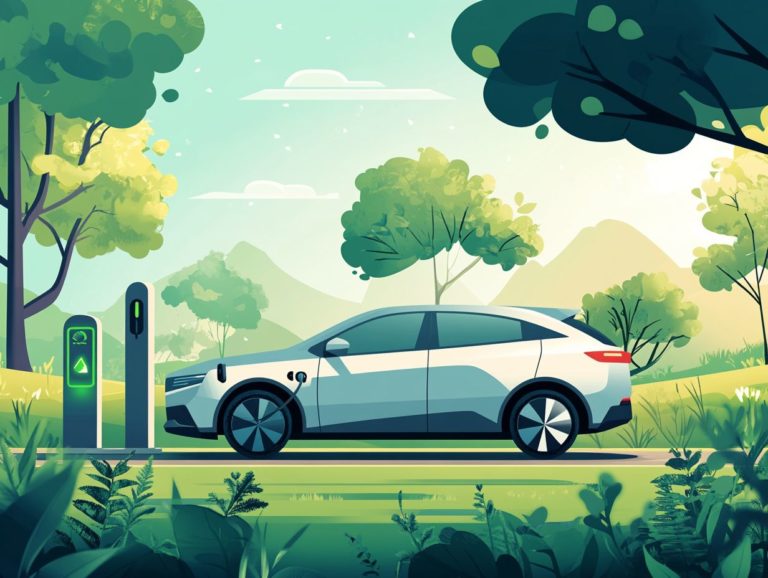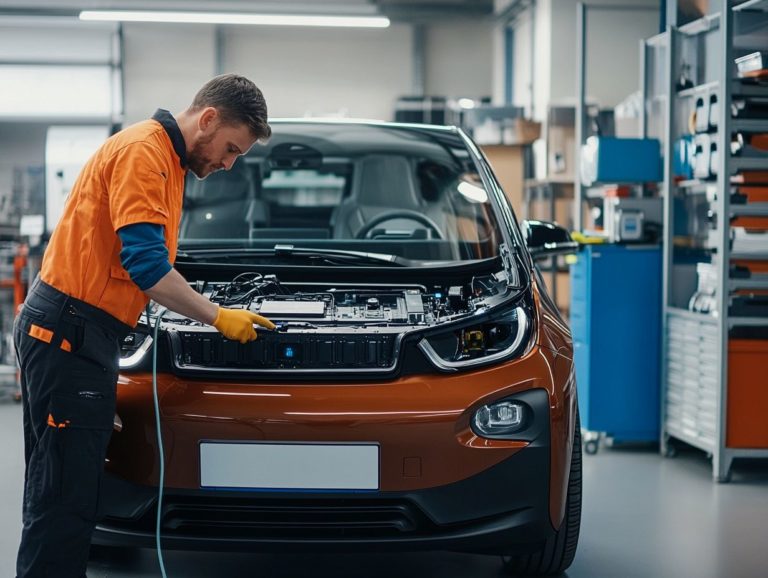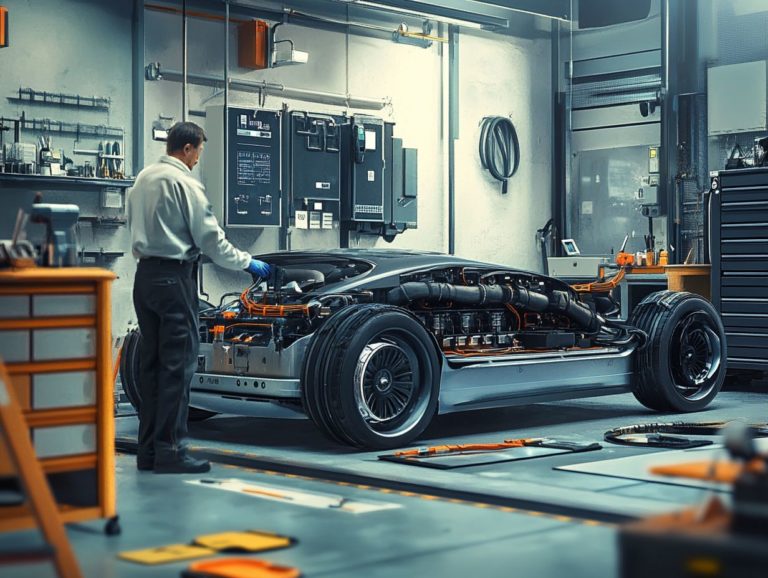Understanding EV Insurance and Maintenance
As electric vehicles (EVs) reshape the automotive landscape, grasping the nuances of EV insurance and maintenance becomes crucial for both new and prospective owners.
Get ready to explore the exciting world of EV insurance, where you’ll learn everything you need to know about the essentials, including the different types of policies available and the factors that impact rates.
This article also examines the distinctive maintenance requirements of EVs, providing practical tips to help you maximize battery life and efficiency.
Whether you re an experienced EV enthusiast or just embarking on your journey, this guide offers valuable insights tailored to your needs.
Contents
- Key Takeaways:
- What is EV Insurance?
- Types of Insurance for EVs
- Factors Affecting EV Insurance Rates
- Maintenance Needs for EVs
- Tips for Maintaining an EV
- Frequently Asked Questions
- What is EV insurance and maintenance and why is it important for electric vehicle owners?
- What does EV insurance typically cover?
- Are there any special considerations for insuring an electric vehicle?
- What should I look for in an EV maintenance plan?
- Can I use a regular car insurance policy for my electric vehicle?
- Do I still need to perform regular maintenance on my electric vehicle?
Key Takeaways:
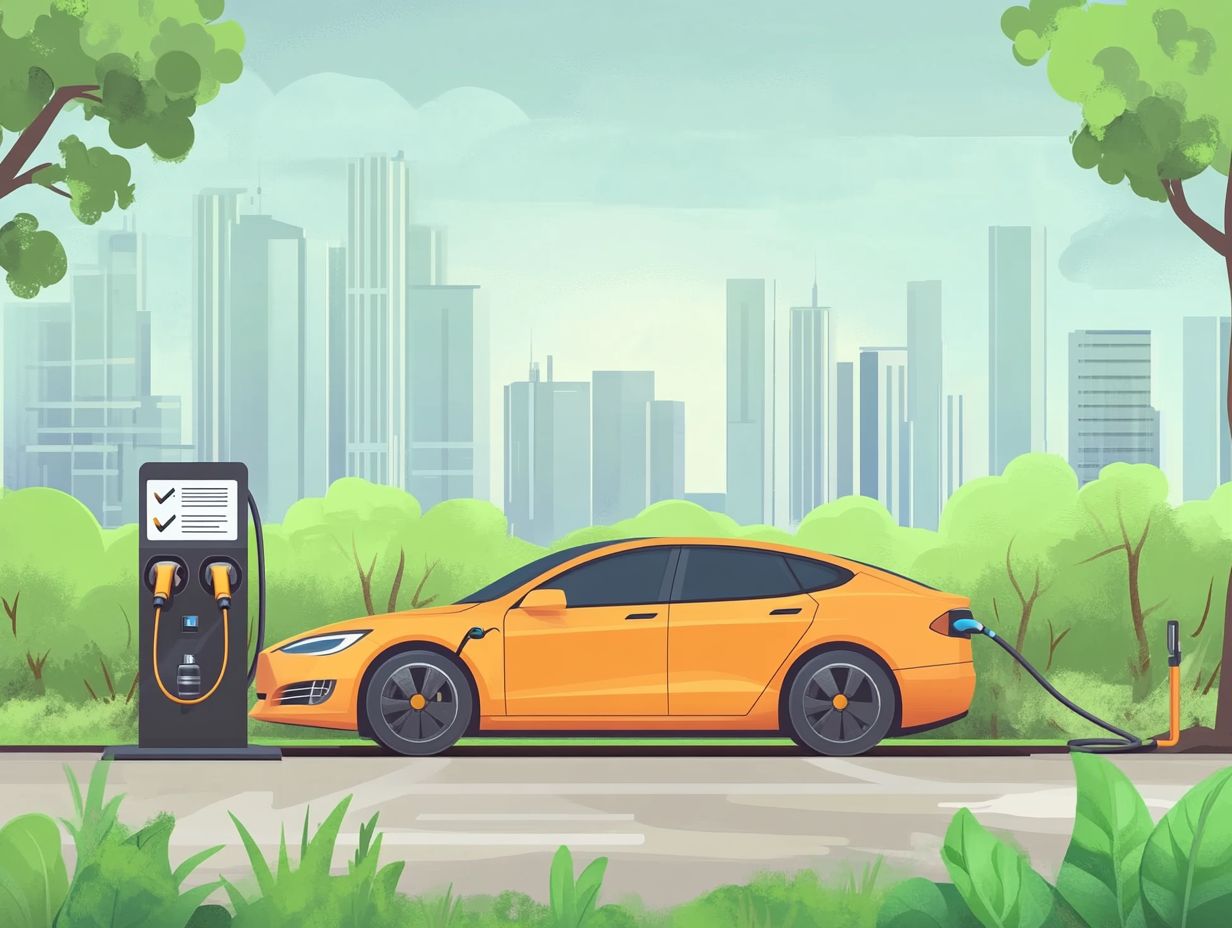
- EV insurance offers coverage specifically tailored to the unique needs and risks of electric vehicles, including coverage for battery damage and charging equipment.
- When choosing insurance for your EV, consider factors such as the type of coverage, your driving habits, and the model of your vehicle to determine the best plan for your budget and needs.
- To keep your EV running smoothly, regular maintenance is necessary. This includes tasks such as checking and replacing the battery, inspecting tires, and staying on top of software updates and recalls.
What is EV Insurance?
EV insurance, or electric vehicle insurance, is a tailored policy crafted to address the distinct needs and risks linked to electric vehicles. As the automotive landscape transitions toward more sustainable choices, grasping the nuances of what are the maintenance needs of EVs becomes essential for you as a consumer aiming to protect your investment in vehicles such as the Tesla Model 3, Chevrolet Bolt EV, and Nissan LEAF.
Unlike conventional car insurance, EV policies often include coverage for powerful batteries and specialized components that demand particular care, resulting in differing insurance costs and premiums. Understanding EV regulations and maintenance can help you make informed decisions that ensure your electric vehicle remains protected.
Definition and Coverage
The essence of EV insurance lies in offering comprehensive coverage specifically crafted for electric vehicles, addressing their distinct components and inherent risks. This type of insurance typically safeguards you against accidents, theft, and damage to your vehicle, ensuring you re well-protected in a variety of situations.
You ll often find specialized options, such as battery replacement coverage (insurance that pays for replacing your car’s battery), which is vital given the high cost of electric vehicle batteries. With this coverage, you can rest easy knowing that if your battery fails or gets damaged, you won t be hit with staggering repair expenses.
Many policies even include roadside assistance tailored for EVs, covering scenarios like running out of charge or needing a tow to the nearest charging station. By offering these customized features, understanding the impact of EVs on insurance not only protects your vehicle but also elevates your overall driving experience, granting you greater peace of mind while navigating the road.
Types of Insurance for EVs
When you re contemplating insurance options for your electric vehicle, you re faced with a variety of coverage types, such as full coverage and liability insurance, each designed to meet different levels of protection and financial responsibility.
Full coverage generally safeguards you against a wide array of risks, including accidents, theft, and damage, while liability insurance focuses on covering damages to others if you re at fault in an accident.
Grasping these distinctions is essential for electric vehicle owners like yourself who want to strike the right balance between maintenance costs and understanding EV maintenance myths and insurance premiums.
Full Coverage vs Liability
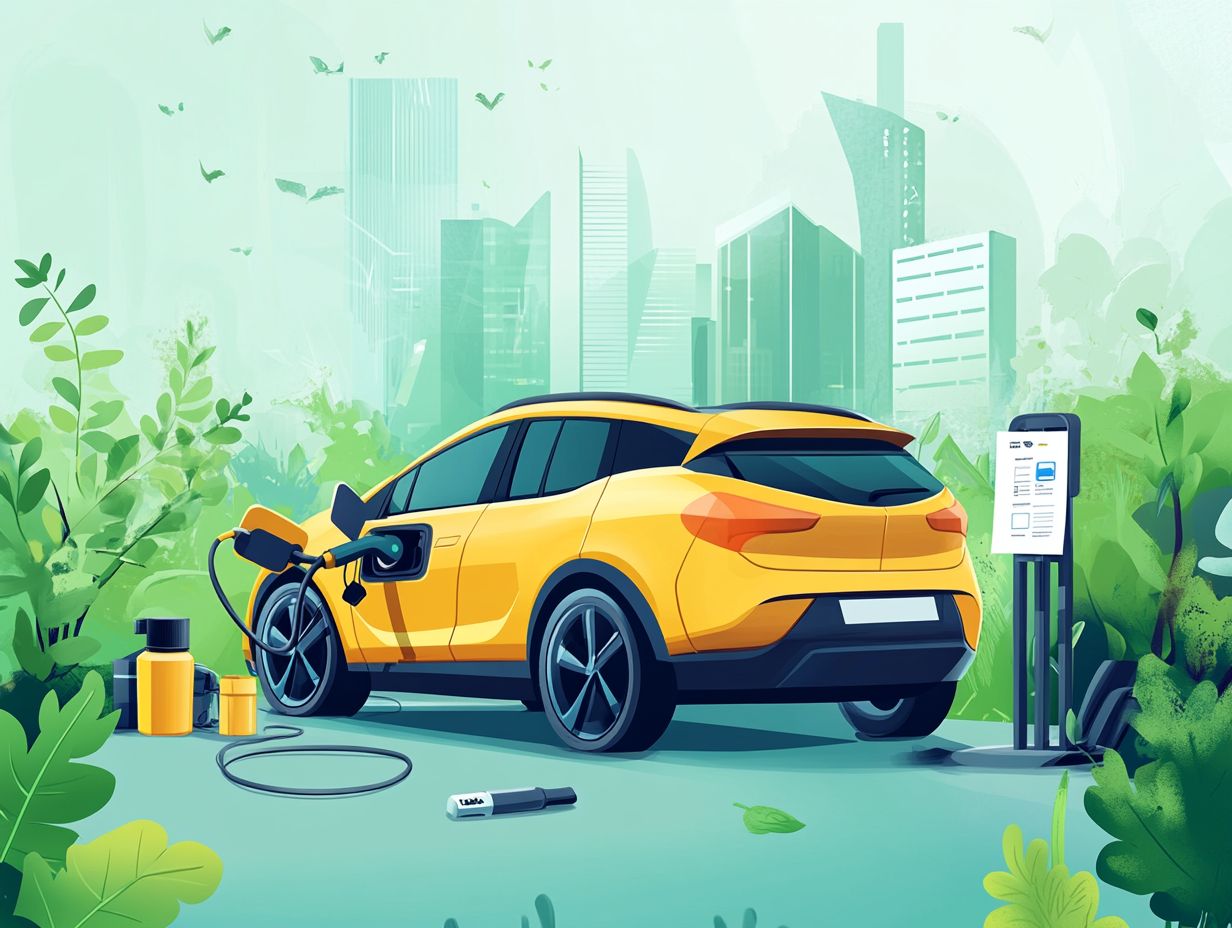
Full coverage insurance for electric vehicles offers extensive protection against a variety of risks. Liability insurance, on the other hand, focuses on covering damages to others in the event of an accident. Understanding these options is crucial for selecting the right policy tailored to your needs.
Full coverage typically includes liability, collision, and comprehensive coverage. It addresses scenarios such as theft, natural disasters, or accidents caused by driver error.
Liability insurance primarily protects you from costs incurred by victims involved in an accident. This type of coverage is particularly important if you drive frequently or navigate busy traffic.
Understanding this distinction allows you to assess your comfort with risk effectively. For instance, if you live in an urban environment, full coverage may offer greater advantages.
Conversely, if you re an occasional driver, basic liability could help you save on premiums. Regardless of your choice, carefully evaluate your driving habits and financial situation.
Factors Affecting EV Insurance Rates
Several factors can profoundly influence your EV insurance rates. These include the model of your vehicle, your driving habits, and your location.
For example, living in an area with many charging stations and government incentives like California may lead to lower insurance premiums for electric vehicles.
The technical support and repair costs associated with particular EV models can also affect your rates. Stay well-informed about your options by utilizing resources like Consumer Reports.
Vehicle Model, Driving Habits, and More
The model of your electric vehicle significantly influences your insurance rate. Repair costs and safety ratings can differ widely between models like the Tesla Model 3 and the Nissan LEAF.
Your driving habits also play a crucial role in shaping your insurance premiums. Whether you take frequent long trips or stick to speed limits, these factors matter.
Vehicles with higher safety ratings, like the Tesla Model 3, generally attract lower insurance premiums due to their advanced safety features. In contrast, models with less favorable ratings can lead to increased costs.
Your driving behavior significantly impacts your insurance rates. If you tend to accelerate quickly or brake hard, you may see higher rates.
In summary, both the vehicle you choose and your driving style are essential in determining your insurance costs.
Maintenance Needs for EVs
The maintenance needs for electric vehicles differ from those of gas-powered cars. This difference is largely due to unique components like electric batteries and systems that handle a lot of electrical power.
Regular maintenance is vital to ensure optimal performance and extend the lifespan of your vehicle’s battery. This proactive approach can help reduce potential repair costs and long-term maintenance expenses.
While electric vehicles require fewer oil changes than traditional cars, keep in mind that battery replacements and other specialized services can incur specific costs.
Regular Maintenance and Potential Costs
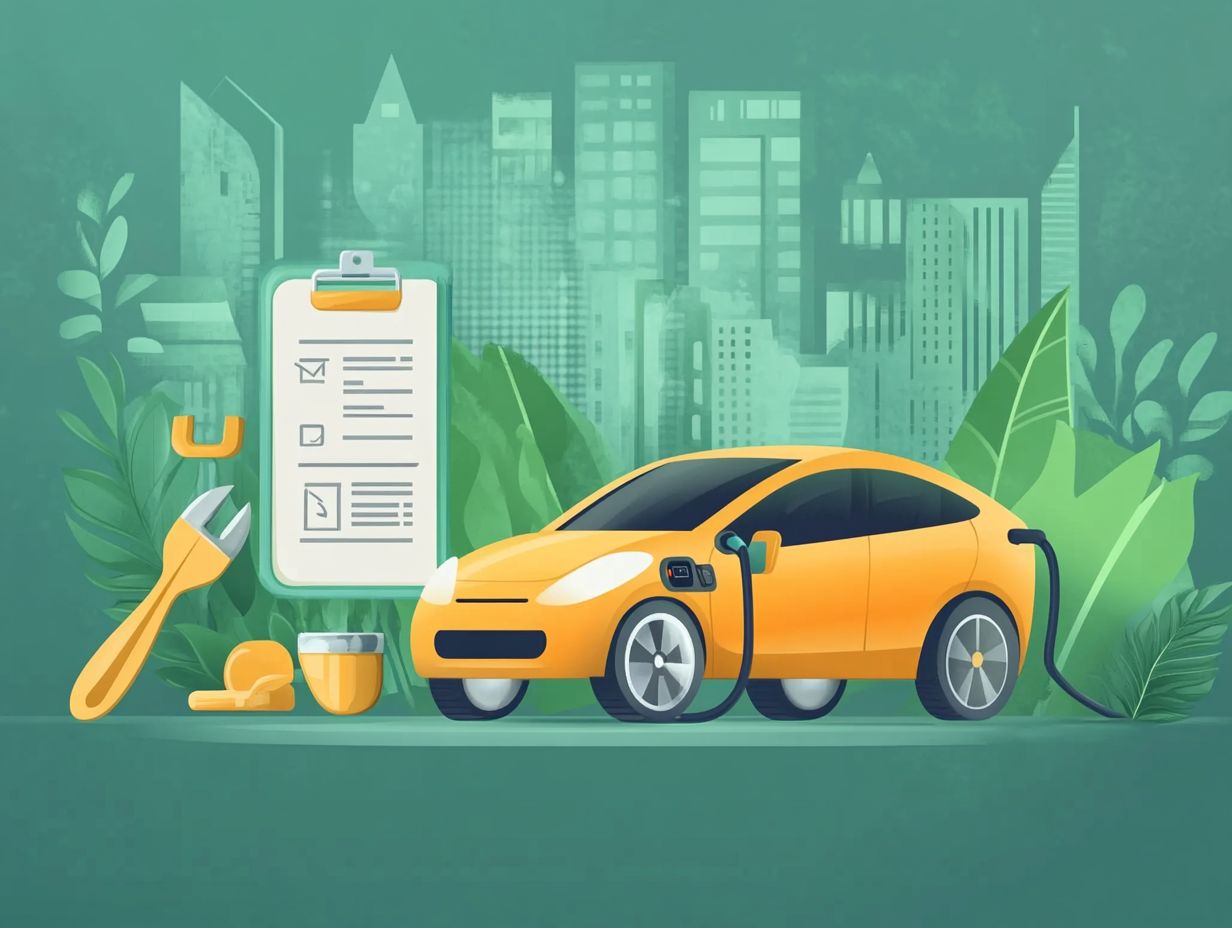
Regular maintenance for your electric vehicle involves a few essential services that can vary in cost, such as checking battery health, assessing the brake system, and rotating the tires. You ll find that EVs generally have lower maintenance expenses compared to gas-powered cars. However, costs tied to battery replacement and specialized services can accumulate over time.
It’s exciting to know that, while you won t be dealing with fluid checks and oil changes in electric models, other maintenance areas like cooling systems for the battery and electric motor still require your attention.
Typically, tire rotations and brake inspections will set you back between $50 and $150, which is pretty much in line with what you d expect for traditional vehicles. However, if a battery replacement is on the table, brace yourself for a bill ranging from $5,000 to $15,000. That s quite the investment compared to the routine upkeep of internal combustion engines.
Understanding these differences enables you to make informed decisions about your maintenance schedule, ensuring that your EV remains in top condition.
Tips for Maintaining an EV
Maximizing battery life and efficiency in electric vehicles is essential for you as an owner looking to enhance your driving experience while keeping long-term costs in check.
By adopting effective maintenance strategies like monitoring your charging habits and recognizing how your driving behavior influences battery performance you can improve the longevity and efficiency of your EV.
Use available resources and expert guidance on proper EV care to maintain your vehicle more effectively. This ultimately leads to lower maintenance expenses down the line.
Maximizing Battery Life and Efficiency
Maximizing battery life and efficiency in electric vehicles hinges on embracing specific driving habits and routine maintenance practices that can significantly extend battery health. Simple tips, such as avoiding full discharges and maintaining optimal charging levels, can remarkably enhance the longevity of your electric battery.
Beyond these foundational practices, you can take proactive steps like using regenerative braking, a system that uses energy from braking to recharge the battery. This helps reduce wear and lengthen its lifespan. Regularly checking your tire pressure and ensuring they re properly inflated is crucial; well-maintained tires offer less rolling resistance, which improves energy efficiency.
Furthermore, minimizing the use of high-energy features, like air conditioning and heated seats while driving, not only conserves battery life but also aligns with eco-friendly driving habits. By weaving these strategies into your routine, you can significantly elevate the overall performance of your electric vehicle.
Frequently Asked Questions
What is EV insurance and maintenance and why is it important for electric vehicle owners?

EV insurance and maintenance refers to the coverage and services specific to electric vehicles. Understanding EV maintenance costs is important because it helps protect your investment and ensures your EV stays in good condition.
What does EV insurance typically cover?
EV insurance typically covers damages to your vehicle from accidents, theft, vandalism, and natural disasters. It may also include liability coverage for bodily injury and property damage.
Are there any special considerations for insuring an electric vehicle?
Yes, electric vehicles can have higher insurance rates due to their higher cost and unique repair processes. It’s important to compare quotes from different insurance providers to find the best coverage and price for your EV.
What should I look for in an EV maintenance plan?
An EV maintenance plan should include regular inspections and upkeep of your vehicle’s battery, charging system, and other electric components. It should also cover any necessary repairs or replacements for these parts.
Can I use a regular car insurance policy for my electric vehicle?
You can insure an electric vehicle with a regular car insurance policy. However, it may not cover all your specific needs.
Discover insurance options that cater specifically to electric vehicles!
Do I still need to perform regular maintenance on my electric vehicle?
Yes, regular maintenance keeps your electric vehicle running smoothly. This includes checking and replacing essential fluids, tires, brakes, and other necessary parts.

